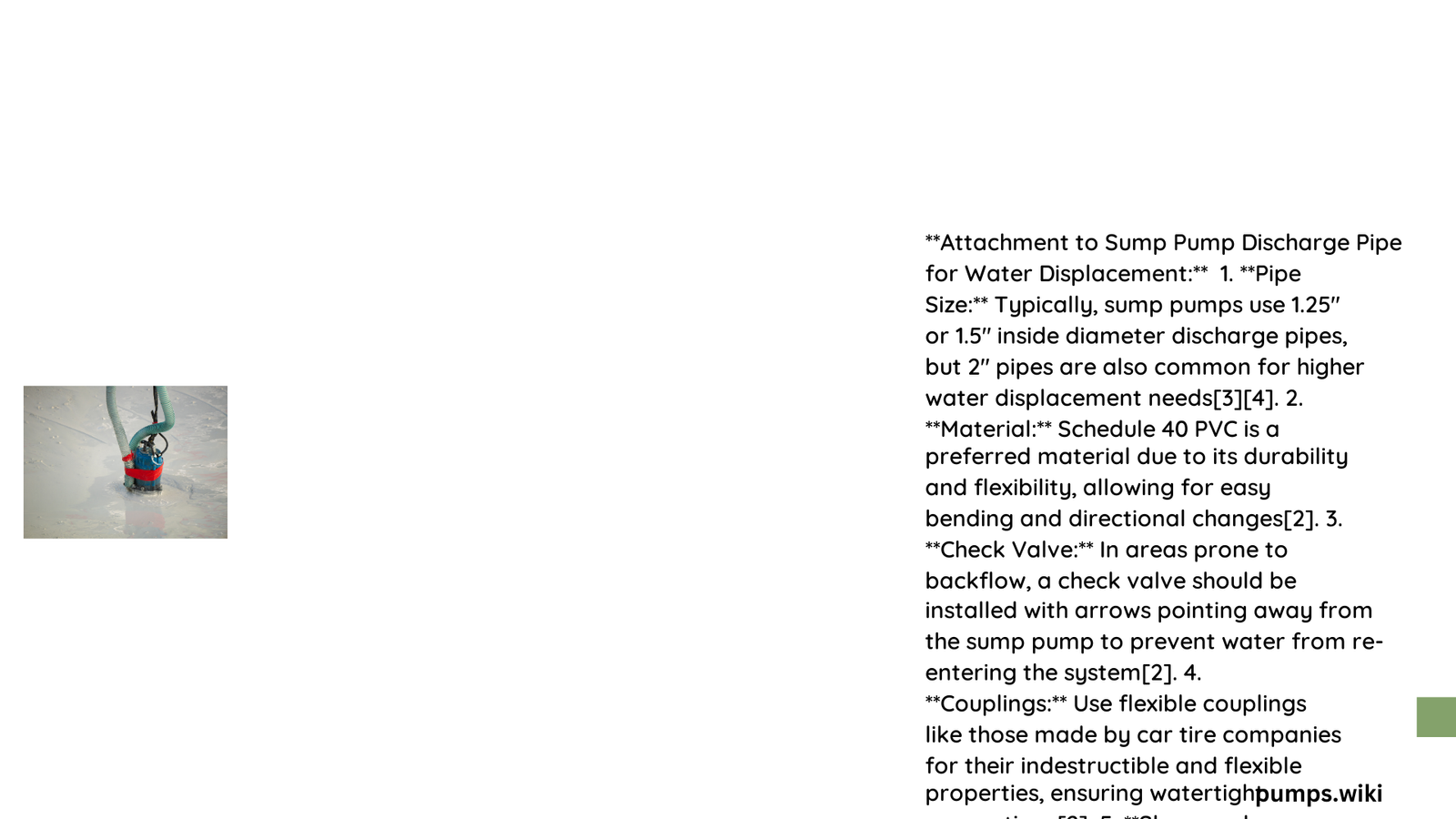Sump pump discharge pipe attachment is a critical infrastructure component for managing groundwater and preventing basement flooding. Proper attachment ensures efficient water displacement, reduces potential system failures, and protects your property from water damage. Understanding the nuanced techniques of pipe connection, material selection, and strategic positioning can significantly enhance your drainage system’s performance and longevity.
What Are the Essential Materials for Sump Pump Discharge Pipe?
Pipe Material Selection
Selecting the right materials for your sump pump discharge pipe is fundamental to creating a robust water displacement system. The most recommended materials include:
- PVC (Polyvinyl Chloride)
- Lightweight
- Corrosion-resistant
- Cost-effective
-
Easy to install
-
HDPE (High-Density Polyethylene)
- Extremely durable
- Flexible
- Resistant to chemical degradation
- Ideal for underground installations
| Material | Durability | Cost | Installation Difficulty |
|---|---|---|---|
| PVC | Moderate | Low | Easy |
| HDPE | High | Medium | Moderate |
Pipe Diameter Considerations
The pipe diameter directly impacts water flow and system efficiency. Standard discharge pipe diameters range from:
- 1 1/4 inches
- 1 1/2 inches
- 2 inches
- 3 inches (for high-capacity systems)
How Do You Properly Attach a Discharge Pipe?

Connection Techniques
Successful attachment requires precise techniques:
- Gasket and Adapter Usage
- Use rubber o-rings for tight sealing
- Select appropriate adapter sizes
-
Ensure compatibility with pump outlet
-
Check Valve Installation
- Prevents water backflow
- Reduces pump motor strain
- Increases overall system reliability
Angle and Elevation Strategies
Proper pipe angle and elevation are crucial for optimal water displacement:
- Use two 45-degree bends instead of a single 90-degree bend
- Maintain a slight downward slope away from the foundation
- Elevate discharge pipe at least 6 inches above ground level
- Support pipe every 4-5 feet to prevent sagging
What Tools Are Required for Attachment?
Essential tools include:
- Pipe cutters
- Measuring tape
- Hose clamps
- Rubber gaskets
- Pipe sealant
- Level
- Drill (for mounting supports)
What Are Common Attachment Challenges?
Potential Issues and Solutions
- Pipe Leakage
- Use high-quality sealants
- Ensure proper gasket fitting
-
Check connections regularly
-
Freezing Concerns
- Bury pipes below frost line
- Use insulation sleeves
- Consider heat tape for extreme climates
Best Practices for Long-Term Performance
- Inspect connections annually
- Clean discharge pipe periodically
- Monitor water flow
- Replace worn-out components promptly
Professional Recommendations
- Consult local building codes
- Consider professional installation for complex systems
- Choose materials suited to your specific environmental conditions
Conclusion
Mastering attachment to sump pump discharge pipe for water displacement requires understanding materials, techniques, and environmental factors. By implementing these strategies, homeowners can create robust, efficient drainage systems that protect their properties from water-related damage.
